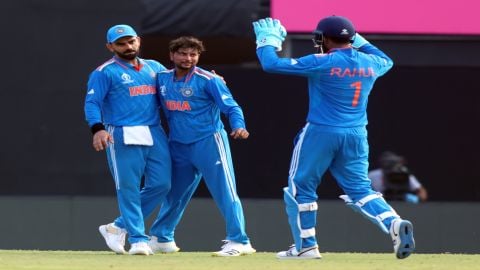
Men’s ODI WC: Along with turn, pace of bowling also becomes very important, says Kuldeep Yadav (Image Source: IANS)
ODI World Cup: In India’s six-wicket win over Australia in their 2023 Men’s ODI World Cup campaign opener, the spin troika of Ravindra Jadeja, Kuldeep Yadav and Ravichandran Ashwin combined to pick up six wickets in bowling out the visitors for 199.
Kuldeep, who took two wickets which included flattening Glenn Maxwell’s leg-stump, said apart from turn, the pace at which a spinner bowls on a spin-friendly pitch, also becomes very important.
“Important thing to see is, the wicket is turning at what pace. Sometimes you get a turn, but then it’s a slow one, which makes it easy for batting. It becomes very important for me to vary pace.”

